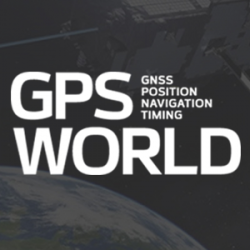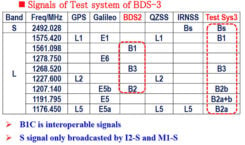
Research Roundup: Soft information for IoT positioning
November 19, 2019
Soft information for IoT positioning The billions of interconnected devices and sensors embedded in other devices, vehicles and […]
Read More

Soft information for IoT positioning The billions of interconnected devices and sensors embedded in other devices, vehicles and […]

Recently launched satellites of BeiDou Phase 3 program have started broadcasting new signals. Javad GNSS announced successful tracking […]

Researchers at the Politecnico di Torino university detected spikes in the L1 signal spectrum. The origin of the spikes was identified as the transmission of a non-standard code from a non-operational GPS satellite. This story reports on signal observations performed to identify the source of the interference and the impact it could have on GNSS signal processing.

The engineering team behind the signal technology underpinning Europe’s Galileo satellite navigation system has reached the final of […]

Q: What is the optimum number of GNSS signals to include/process in a consumer-grade PNT device? A: The […]

Users in emerging applications may have different requirements from traditional high-precision users. Tracking all of the new multi-GNSS signals, and then using the large number of inputs in the positioning engine, drives the amount of processing power and memory required onboard the receiver. These in turn drive the cost, size and power consumption of the receiver in exactly the opposite direction from the expectations of customers.

Chip Transition-Edge Based Signal Tracking for Ultra-Precise GNSS Monitoring Applications
This novel concept of monitoring chip asymmetry can extend the state of the art in the areas of GNSS signal-quality monitoring and authentication. Tracking GNSS signals using their underlying spreading sequence chip transition edges reveals positive versus negative chip asymmetries that are characteristic to each satellite. This asymmetry is due to various types of natural signal deformation that is known to occur within the satellite’s signal generation and transmission hardware.

Future positioning and navigation applications of modernizing and newly established GNSSs will require a higher degree of signal accuracy and precision. Thus, rigorous and detailed analysis of the signal quality of recently launched satellites, including the discovery of any possible imperfections in their performance, will have important implications for future users.
Follow Us